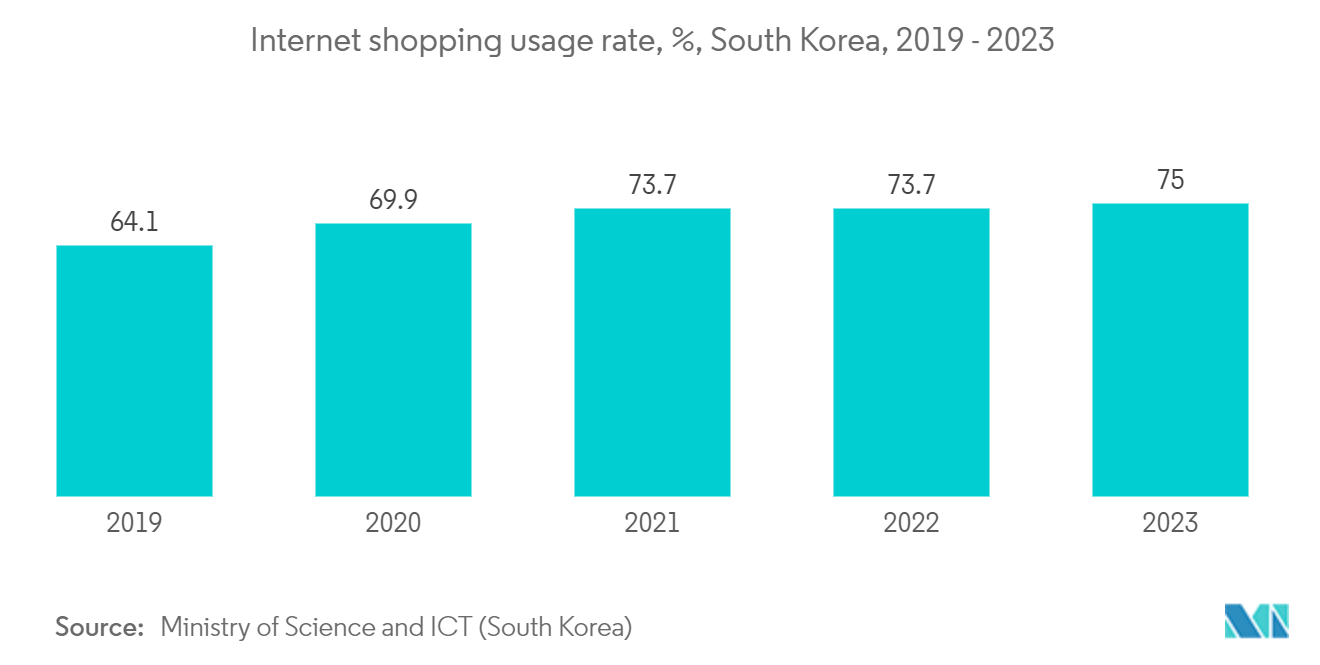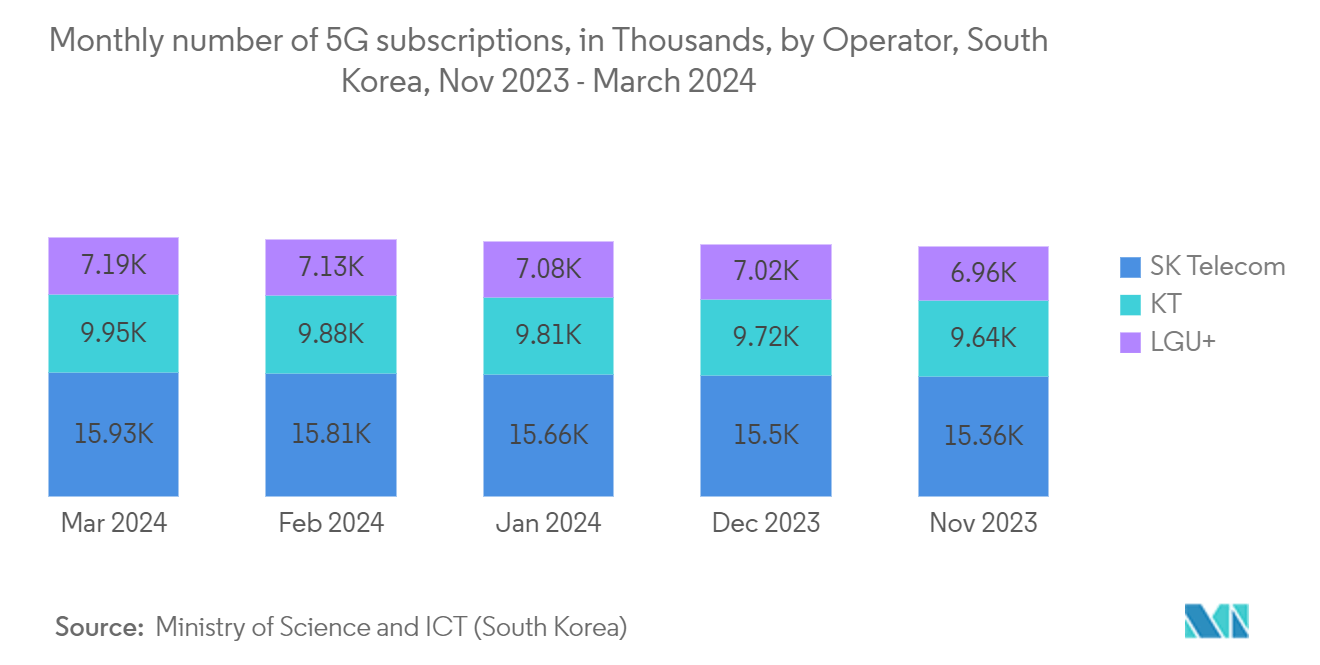Market Trends of South Korea Data Center Cooling Industry
Liquid-based Cooling is the Fastest-growing Segment of the Market
- Liquid cooling takes advantage of the superior heat transfer properties of water or other liquids to support efficient and cost-effective cooling of high-density racks, up to 3,000 times more effective than using air. Long proven in mainframe and gaming applications, liquid cooling is increasingly being used to protect rack servers in data centers across the region.
- Direct liquid cooling solutions deliver remarkable power usage effectiveness (PUE) values, typically ranging from 1.02 to 1.03. This performance surpasses even the most efficient air cooling systems by a slight margin, usually in the low single-digit percentage range. It is essential to note that the enhanced energy efficiency of direct liquid cooling (DLC) cannot be solely attributed to improvements in power PUE.
- Conventional servers incorporate fans that consume power from the rack, and as such, their operation is accounted for within the IT power segment of the PUE calculation. These fan-related power requirements are considered an integral part of the data center's overall workload, often referred to as the data center payload.
- The use of smartphones and tablets is only expected to increase as technology advances. Many Korean ed-tech startups focus exclusively on education through mobile apps or computers. One such startup, SmartStudy, developed a brand called "Pinkfong," which became a global sensation thanks to its Baby Shark series.
- SmartStudy creates educational entertainment content for young children on YouTube. It is estimated that children over six years spend approximately 50 minutes per day on gaming alone. Such developments contribute to the rising data traffic per smartphone in the country.
- Technological advances have made liquid cooling easier to maintain, scalable, and affordable, reducing data center liquid consumption by more than 15% in tropical climates and 80% in greener areas. The energy used for liquid cooling can be recycled to heat buildings and water, and advanced artificial refrigerants can effectively reduce the carbon footprint of air conditioners.

IT and Telecommunication is the Largest Segment of the Market
- The ICT industry is a growth engine of the economy. The two major sub-categories of the telecom industry, telecom equipment and services, respond flexibly to changing market demands and technology trends and continuously invest in innovations that drive growth in the ICT industry.
- The South Korean government decided to lower the barriers to entry for cloud computing services in the country. The move is expected to make foreign tech giants such as Amazon and Microsoft a threat to domestic companies. The US and Chinese tech firms seem open to this proposed deregulation despite growing concerns from KT, Naver, NHN, and other domestic cloud service providers about foreign firms' potential domination of local markets. According to experts, they are beginning to explore opportunities. Such developments have increased the need for data centers from the domestic cloud industry.
- In May 2023, South Korea, Asia's fourth-largest economy, was set to develop a supercomputer tailored for industrial applications to bridge its technological gap. This move is crucial as the nation trails in the realm of super-giant artificial intelligence, a domain vital for future businesses like ChatGPT.
- In 2025, South Korea is slated to commence work on its seventh supercomputer, targeting an exaflop performance, equating to a staggering 1 quintillion floating-point operations per second. Meanwhile, the government is in the process of developing the sixth iteration, aiming for a performance of 600 petaflops capable of handling 600 quadrillion floating-point operations per second. This surge in data processing capabilities is expected to drive up the demand for cooling solutions within the country.


